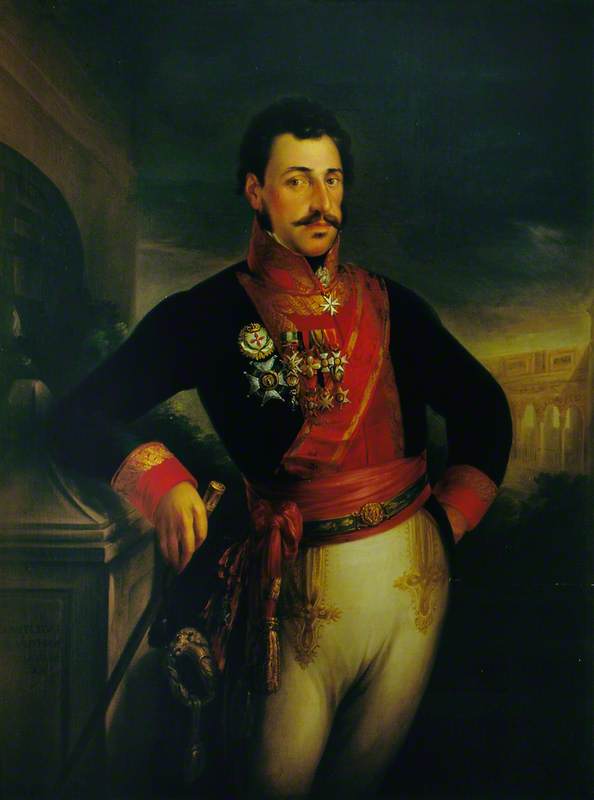Brigadier General Sir John Downie

Sir John Downie portrait
Stirling Smith Art Gallery & Museum, Stirling
John Downie was born at Blairgorts, Kippen, Stirlingshire to a minor landowner, Benjamin Downie of Blairgorts and his second wife Margaret Forrester. Benjamin was a member of a family of Downies from around Stirling and Margaret was from Paisley, though her family was originally from Stirlingshire..
Kippen OPR Record of Baptisms 484/1 1777
Decr 28 (born & Bap Jany. 5 1778) Benjamin Downie & Margaret Forrester – John Witnesses Alexander Downie, John Mcleuse
John's half brother Alexander, son of Benjamin Downie and his first wife Janet Fairley, was the heir to Blairgorts and there were several other male siblings born before John, making it necessary for him to find his own way in life. His biography in The Royal Military Chronicle [p172] states that he first went to the West Indies but does not comment on his occupation there. Joseph [p105] notes that John had failed as a merchant and then as a planter and, having served for many years in the Trinidad Militia set up by the then Governor, Lieutenant General Thomas Picton, he embarked on a distinguished military career.
His militia experience must have stood him in good stead as he is listed by Biggs [p112] as a Colonel in the service of General Francisco de Miranda's 'Columbian Army' in the taking of the Venezuelan city of Coro on 3 August 1806; the account states that he had previously served with the British, and the expedition was transported to Venezuela by British naval vessels. Biggs notes that Colonel Downie was in command of 32 men of the Trinidad infantry. The biography of John Downie states that, following the failure of Miranda's attempt to overthrow Spanish rule in its Caribbean colonies, John returned to London with Miranda. He had been provided with flattering testimonials from General Bowyer, Commander in Chief of the British troops in the West Indies, and Lieut.-Gen. Неsloр, Governor of Trinidad, in their dispatches to Government [p112].
John was appointed Assistant Commissary General to the army commanded by Sir John Moore in Spain (the army arrived in Spain in October 1808) but returned to Britain with the remnants of the army following the death of his fellow Scot at the Battle of Corunna in January 1809. He did not waste his time in preparing the ground for his return to Spain.
Bibliography
Biggs James (1809) The history of Don Francisco de Miranda's attempt to effect a revolution in South America. Boston, Oliver and Munroe
Joseph, E.L. (1839) History of Trinidad. Trinidad, Henry James Mills.
The Royal Military Chronicle or British Officer's Monthly Registrar and Mentor for July, 1813. London, for J. Davis, Military Chronicle and Military Classics Office.